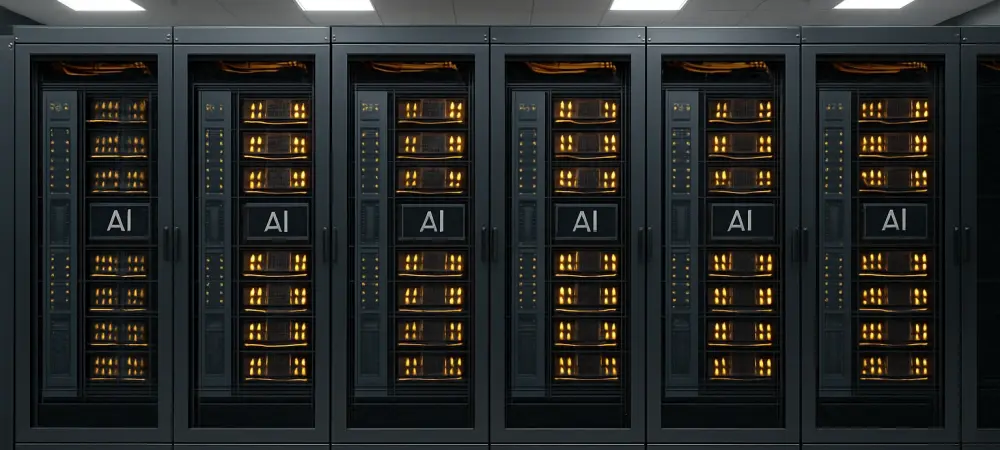I’m thrilled to sit down with Dominic Jainy, a seasoned IT professional whose deep knowledge of artificial intelligence, machine learning, and blockchain has positioned him as a thought leader in cutting-edge technology applications. Today, we’re diving into the fascinating world of AI infrastructure, focusing on a groundbreaking project that transformed five live data centers into a massive AI cluster. Our conversation explores the bold decisions behind repurposing active facilities, the logistical feats of moving thousands of racks, the challenges of maintaining user experience during such a disruptive process, and the innovative strategies that made this ambitious project a reality in just a few months. Join us as we unpack the intricacies of scaling AI infrastructure and the lessons learned along the way.
How did the idea to repurpose five live data centers into a single AI cluster come about, and what drove that decision?
The concept stemmed from the urgent need to build a powerful AI cluster capable of supporting cutting-edge workloads, specifically with 129,000 Nvidia H100 GPUs. We realized that constructing new facilities from scratch would take too long and be far more costly. These existing data centers already had the critical power capacity we needed, which was a huge advantage. The decision wasn’t easy, though—taking down live facilities is a massive investment risk since they’re actively serving users. But the potential to create a supercomputer of this scale outweighed the drawbacks, pushing us to move forward with repurposing.
What were some of the toughest challenges in shutting down active data centers without impacting users?
The biggest hurdle was ensuring zero user-perceived outages. These centers were handling live workloads, so any disruption could ripple out and affect millions. We had to meticulously plan the migration of workloads to other facilities, which involved detailed mapping of dependencies and real-time monitoring to catch any hiccups. Coordinating across teams to execute this seamlessly was intense. Unexpected issues did pop up, like latency spikes during transitions, but we had contingency plans and rapid response protocols in place to address them on the fly.
Can you walk us through the logistics of moving thousands of heavy racks and how you innovated to make it happen?
Moving thousands of 1,000-pound racks was a logistical nightmare turned triumph. We had to redesign loading docks to handle the sheer volume and weight, creating wider access points and reinforced structures for safety. We also built custom robots to transport these racks, which drastically cut down on manual labor and reduced the risk of damage. Another game-changer was adopting crateless packaging—it eliminated the time-consuming process of unboxing and repacking, speeding up the entire operation. Every detail was engineered to keep the pace relentless yet precise.
What did it take to quadruple the networking capacity across these buildings, and how did you manage that scale of upgrade?
Quadrupling networking capacity meant a complete overhaul of the existing setup. We replaced hundreds of meters of network fiber to support the massive data throughput required for an AI cluster of this magnitude. This wasn’t just a swap-out; it required pulling old infrastructure and laying new, high-capacity lines under tight deadlines. We also dug new trenches to physically connect the five buildings, creating a unified network backbone. The process was grueling—coordinating between construction crews and tech teams while maintaining a strict timeline tested our limits, but it was essential to ensure seamless communication across the cluster.
How were you able to pull off such a massive project in just a few months?
Honestly, it came down to ruthless prioritization and innovative problem-solving. We leveraged detailed project management tools to track every task and deadline, ensuring no time was wasted. Cross-functional teams worked around the clock, and we streamlined decision-making to avoid bottlenecks. We did make some trade-offs, like focusing on critical upgrades over aesthetic or non-essential enhancements, but those sacrifices kept us on track. The urgency of deploying this AI cluster fueled us—every day mattered.
Can you explain how power availability played a role in choosing these specific data centers for the project?
Power was a make-or-break factor. Building a cluster with 129,000 GPUs demands an enormous amount of electricity, and not every facility can handle that load. These five data centers already had the infrastructure to deliver the necessary power, which made them ideal candidates. We did assess and reinforce some power systems to ensure stability under peak demand, but the foundation was already there. Choosing sites with this capability saved us from the delays and costs of major electrical upgrades or new builds.
What’s your forecast for the future of AI infrastructure, especially with the scale of projects on the horizon?
I believe we’re just scratching the surface of what AI infrastructure can achieve. The demand for compute power is skyrocketing, and we’ll see clusters grow to unprecedented scales—think gigawatt-level facilities becoming the norm within a decade. Projects like the upcoming 1GW and 5GW clusters signal a shift toward hyper-scale environments that blend AI, energy innovation, and even unconventional setups like temporary structures for speed. The challenge will be balancing this growth with sustainability and efficiency, but I’m optimistic that advances in cooling, power management, and design will keep pace. We’re in for an exciting, transformative era.

